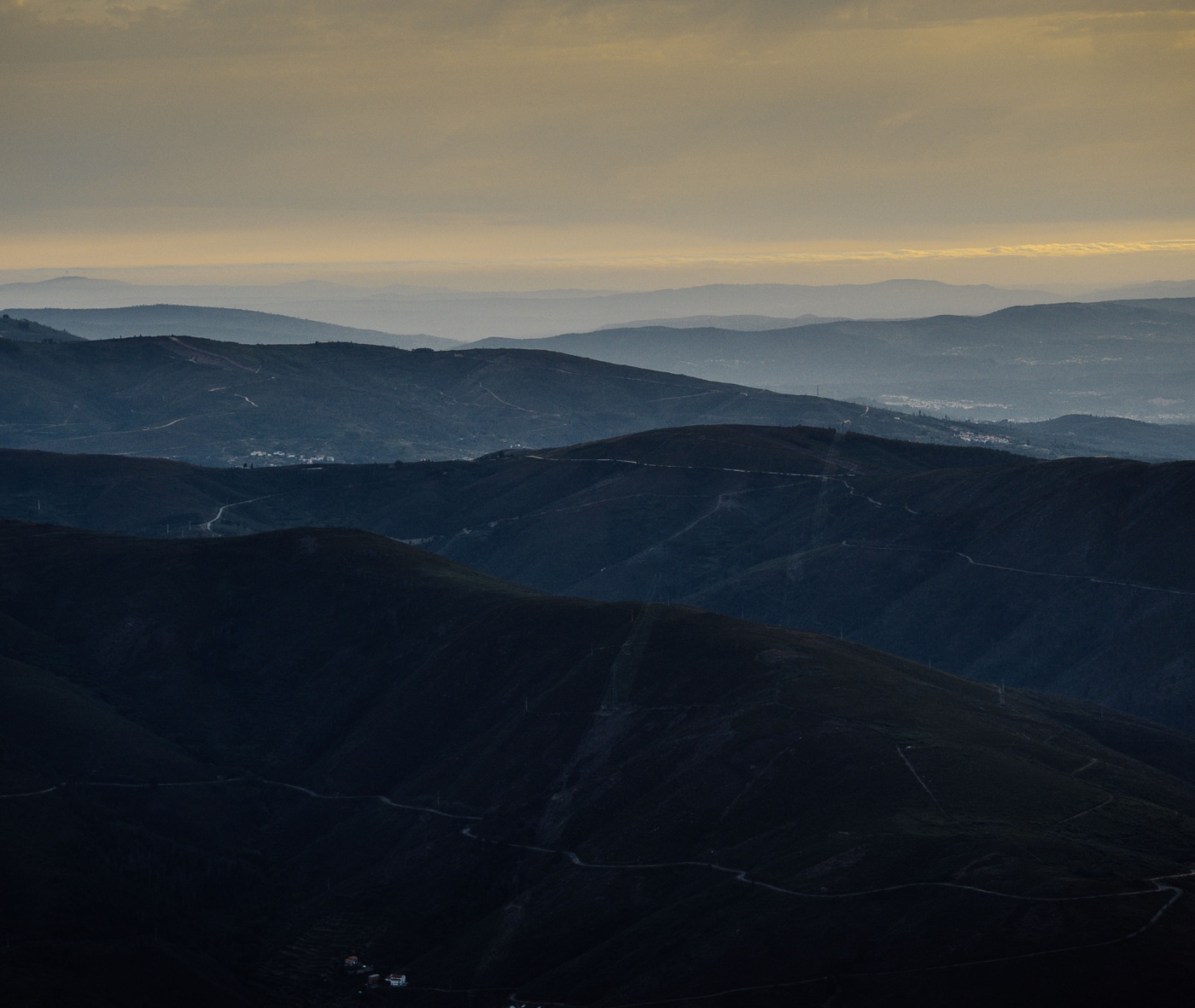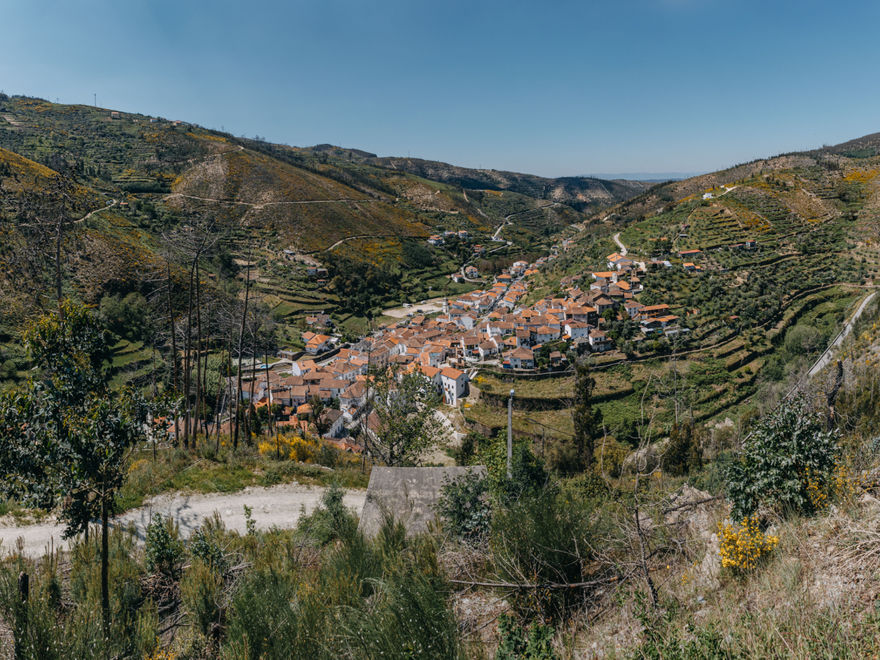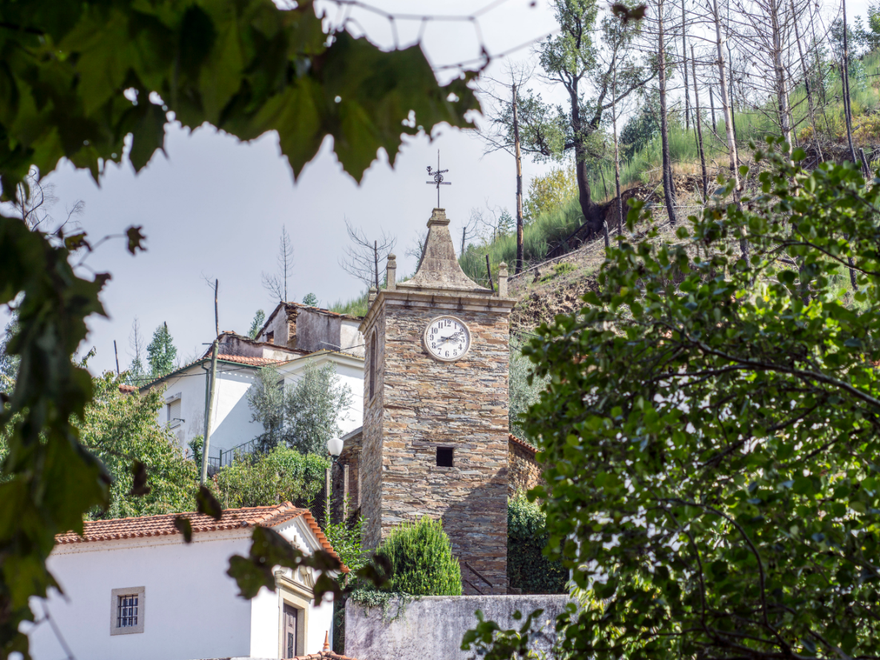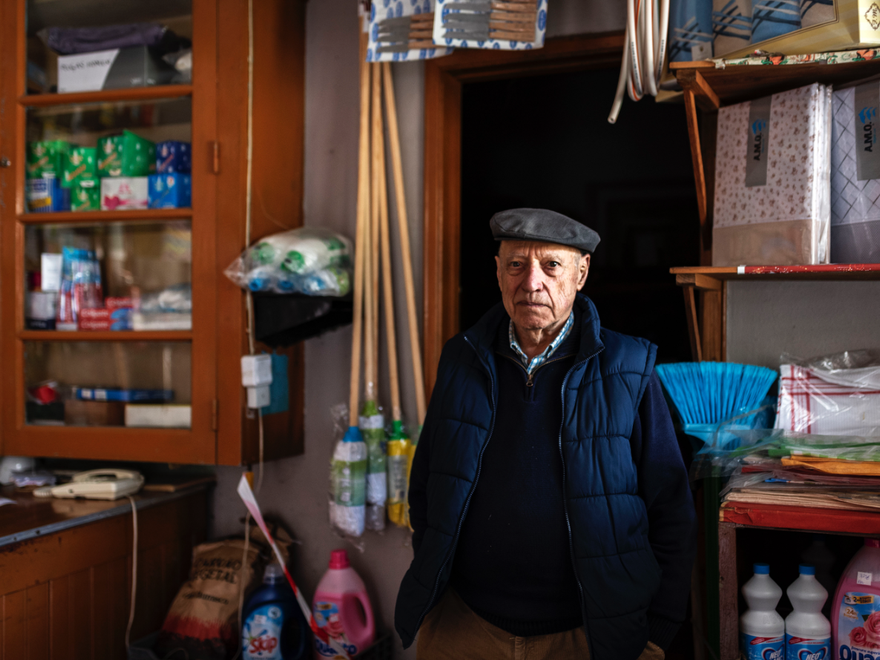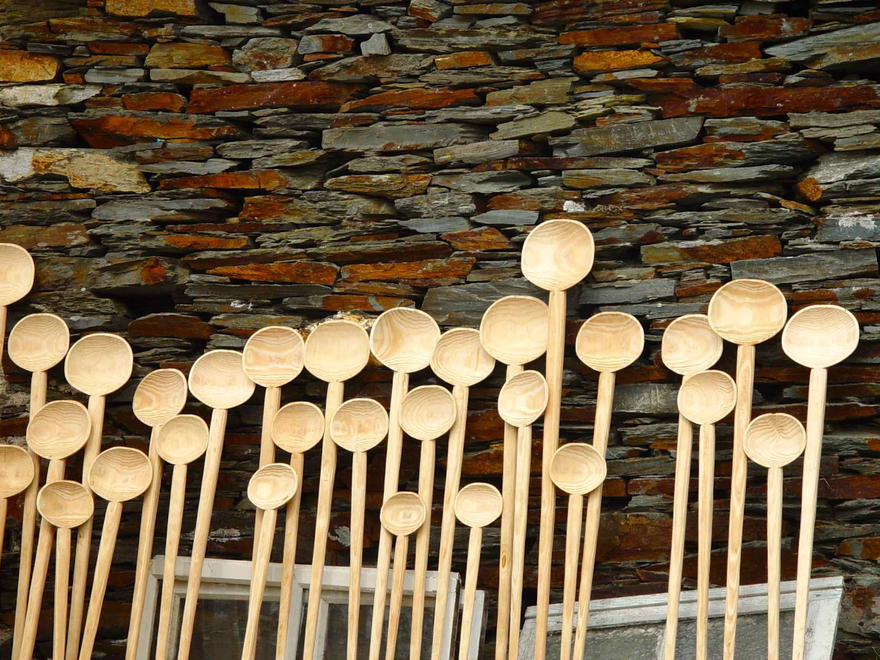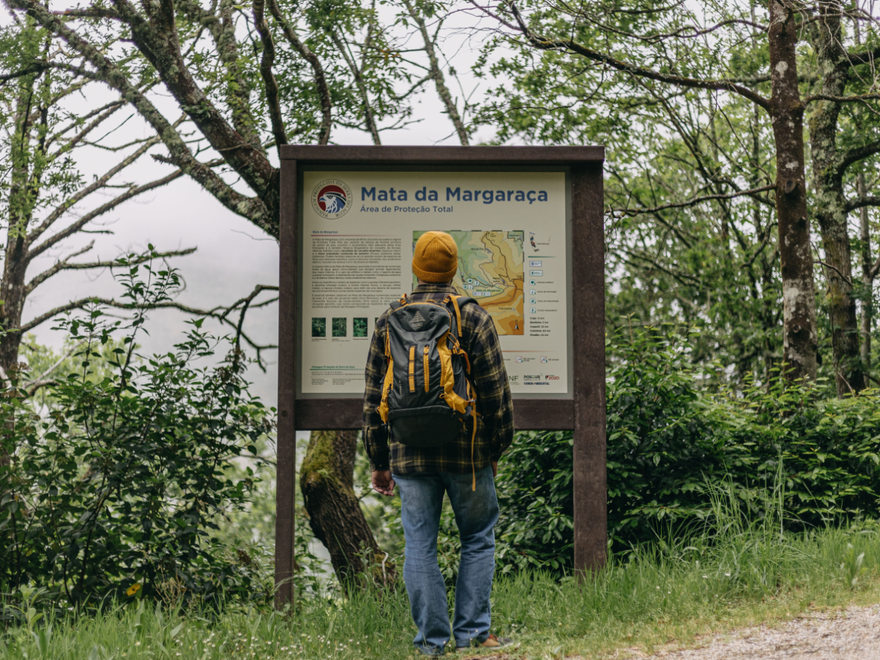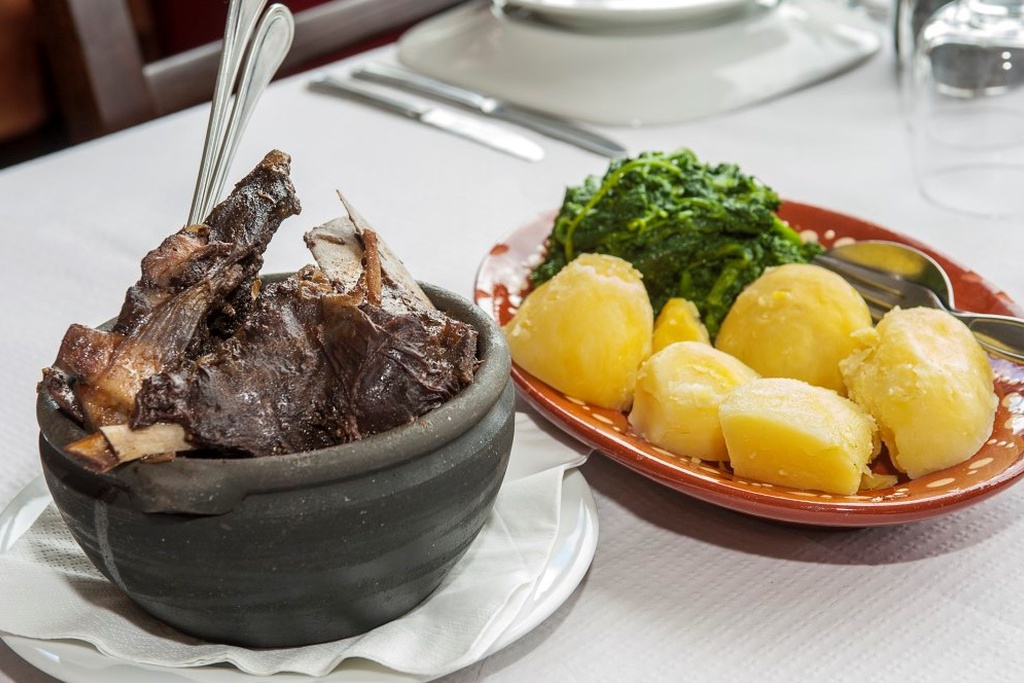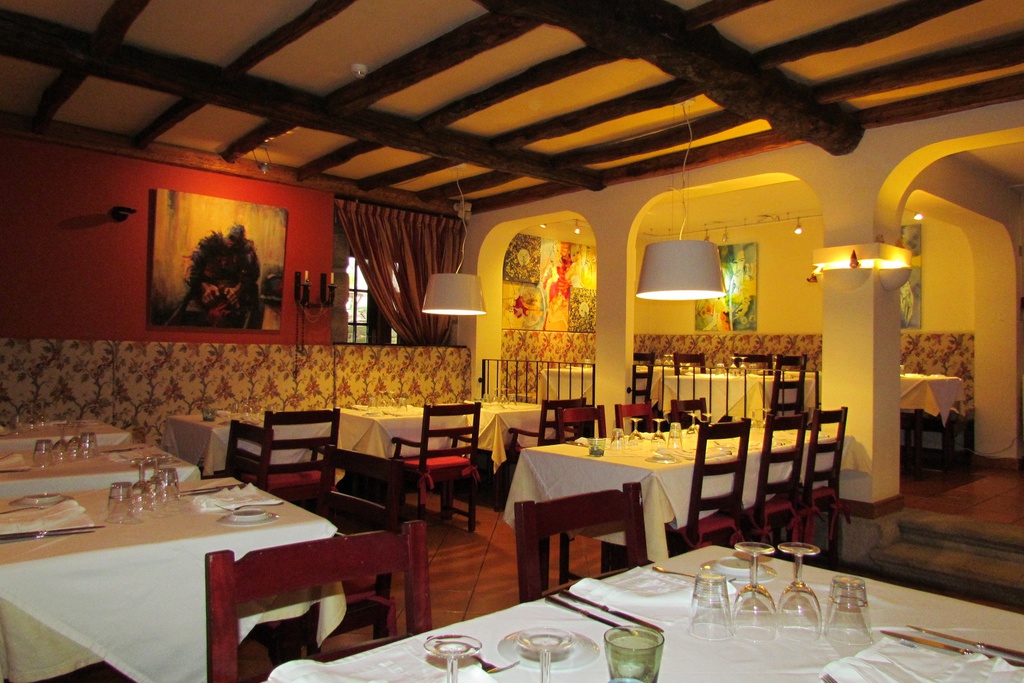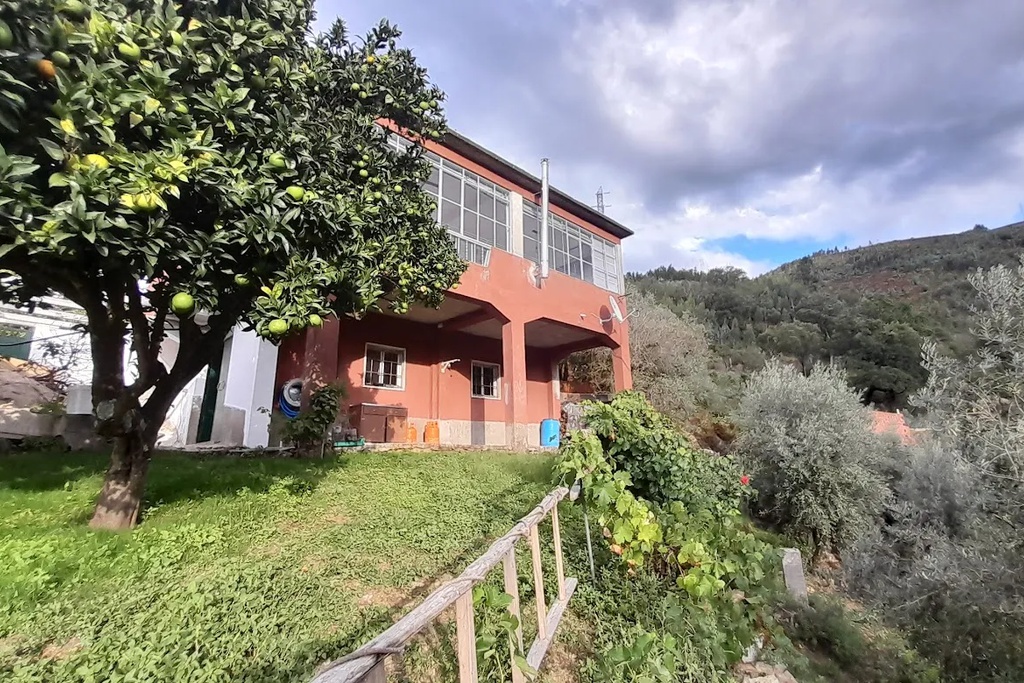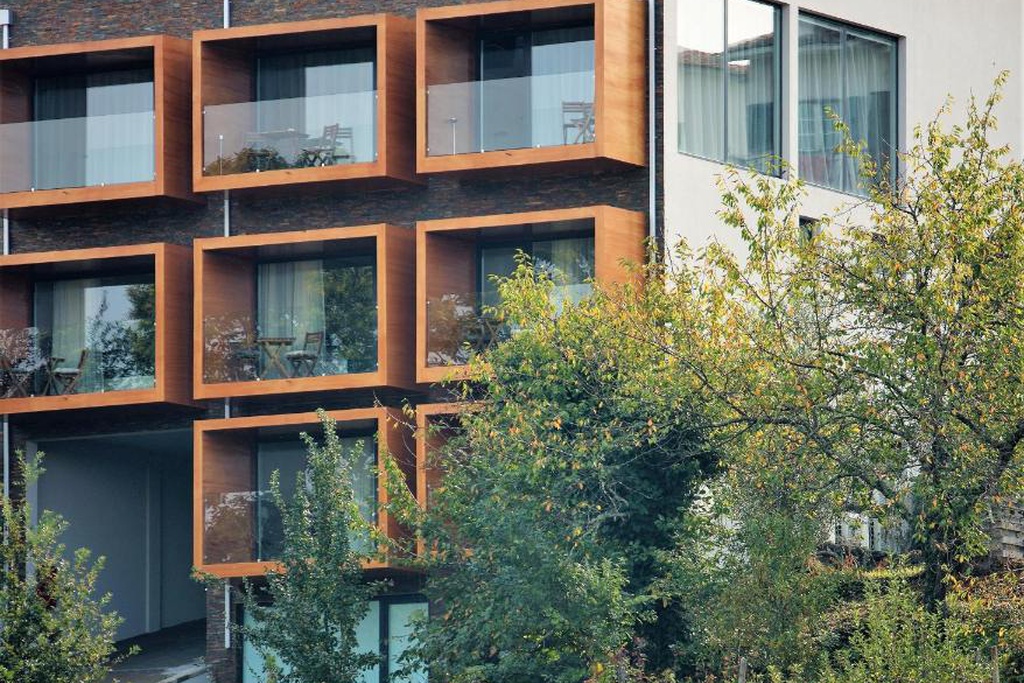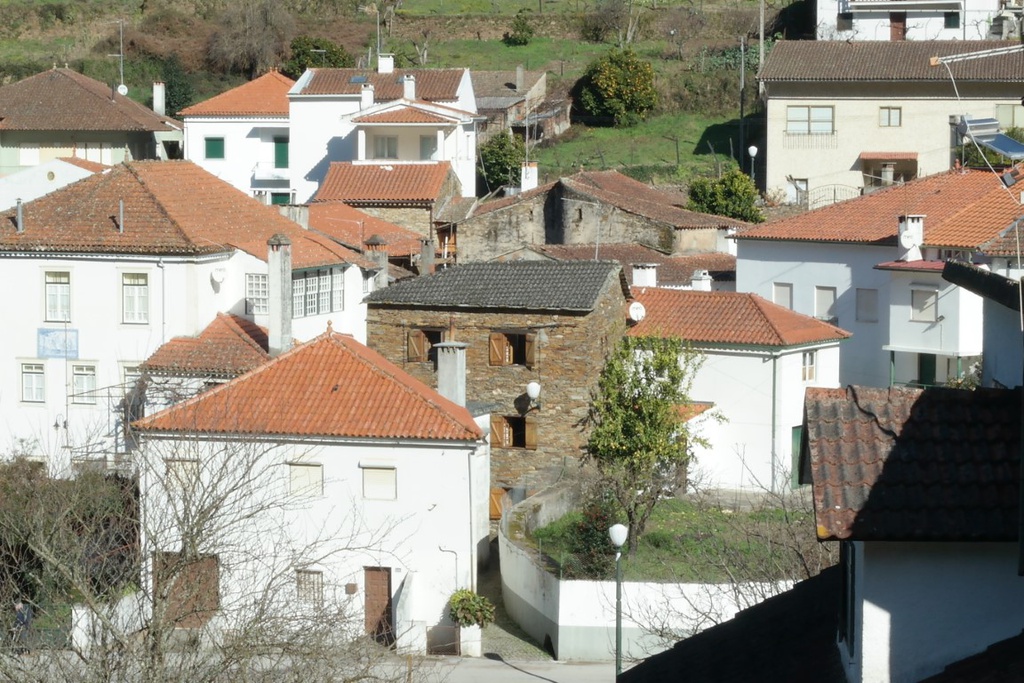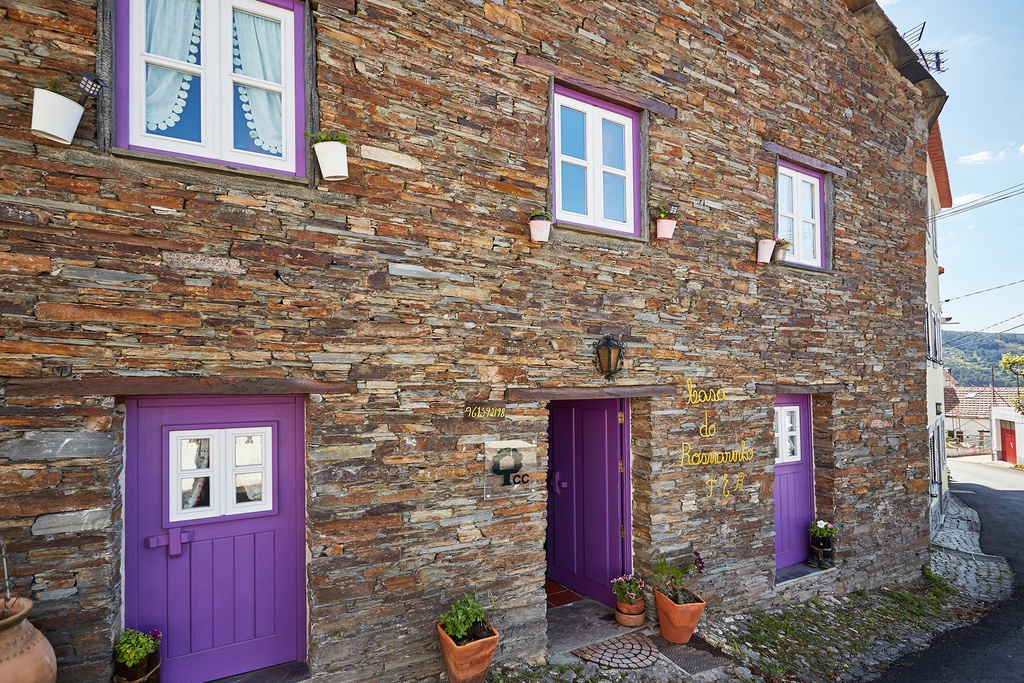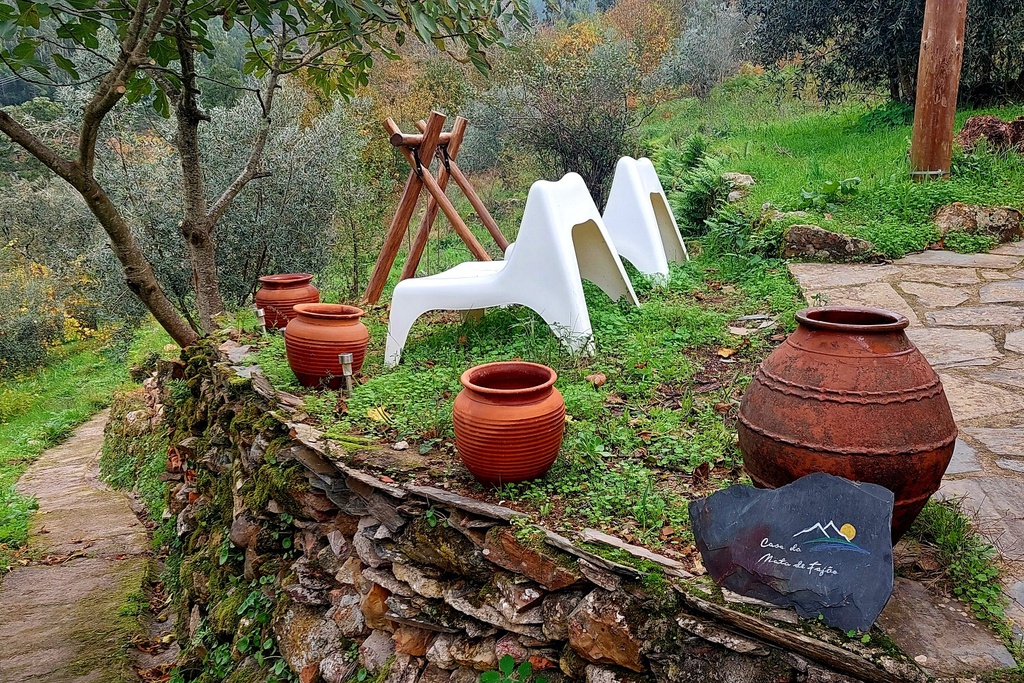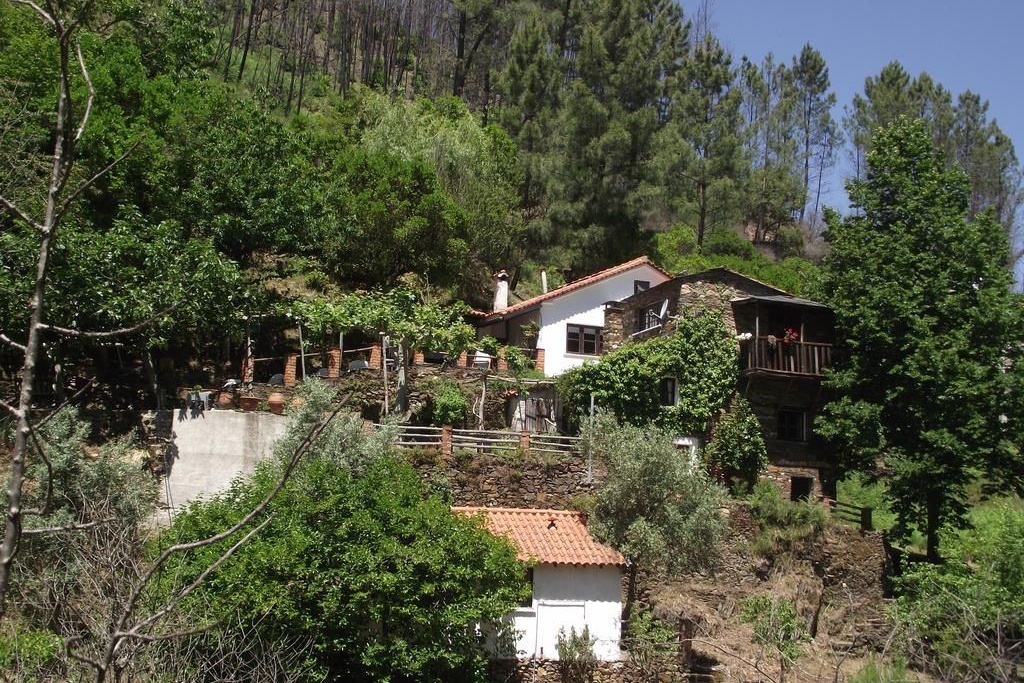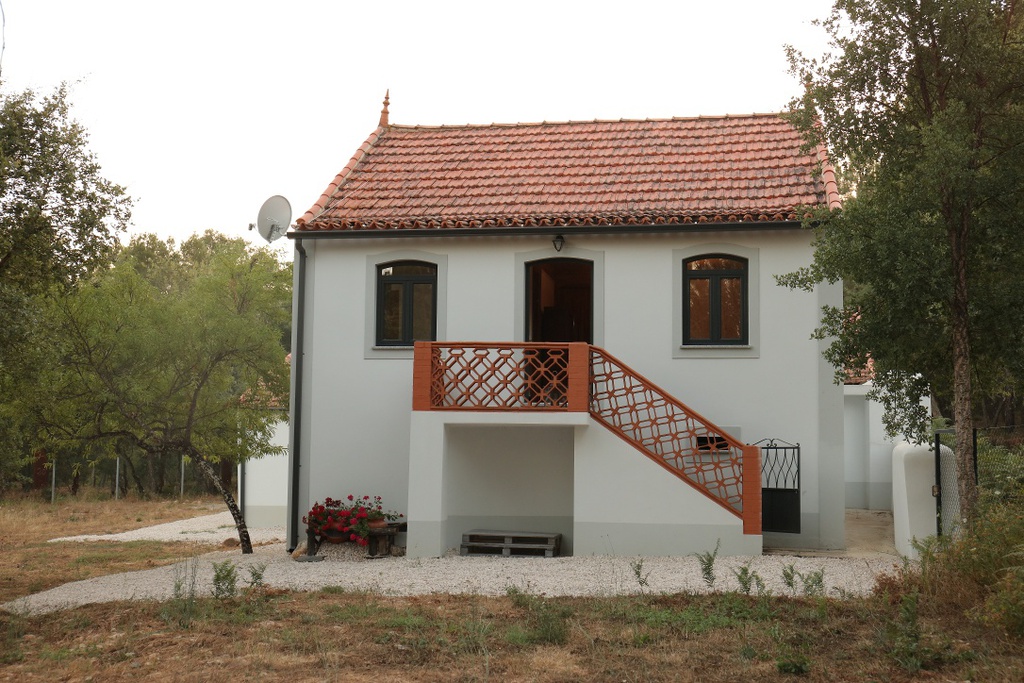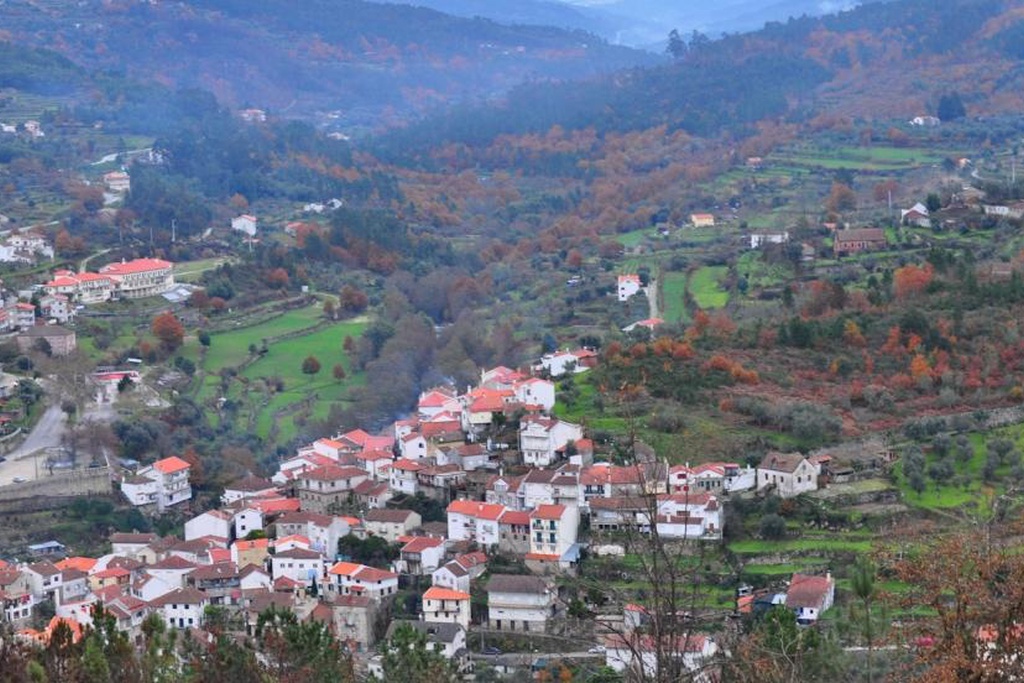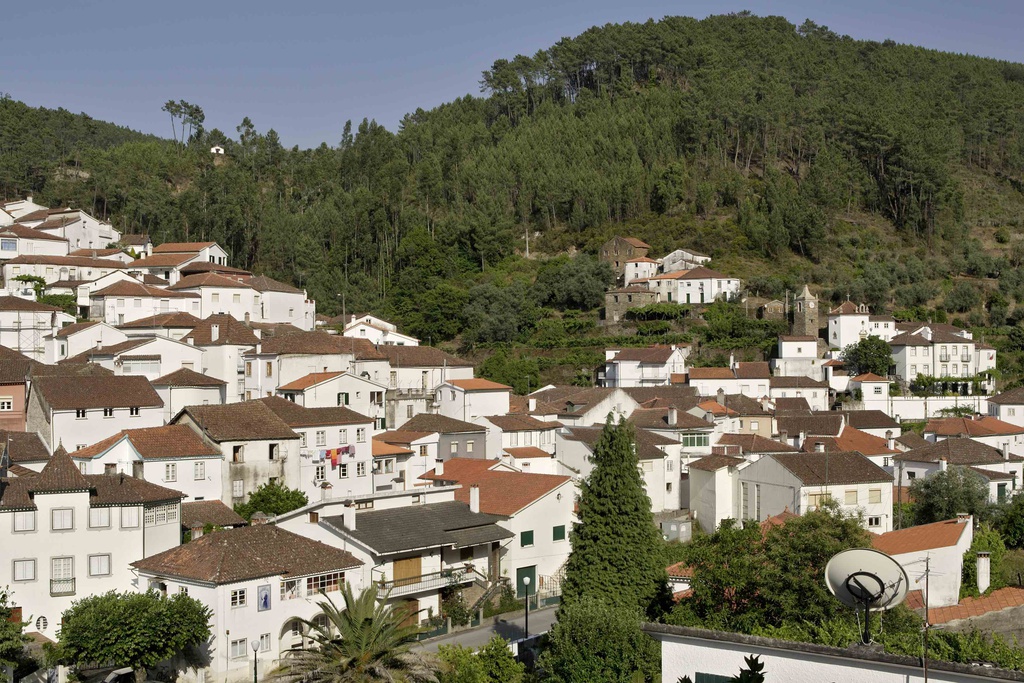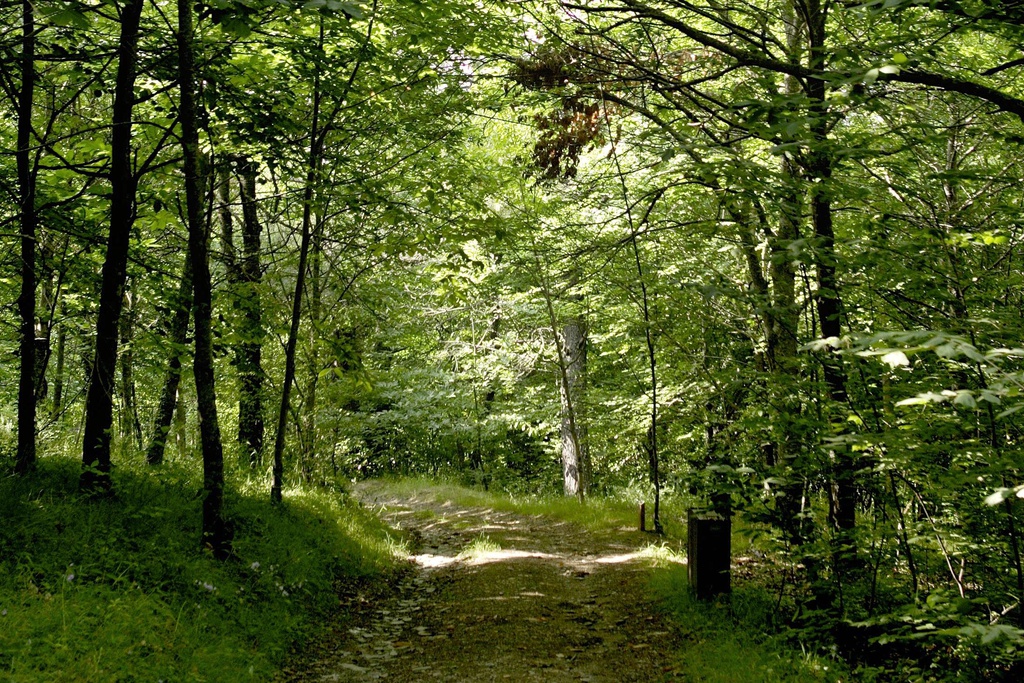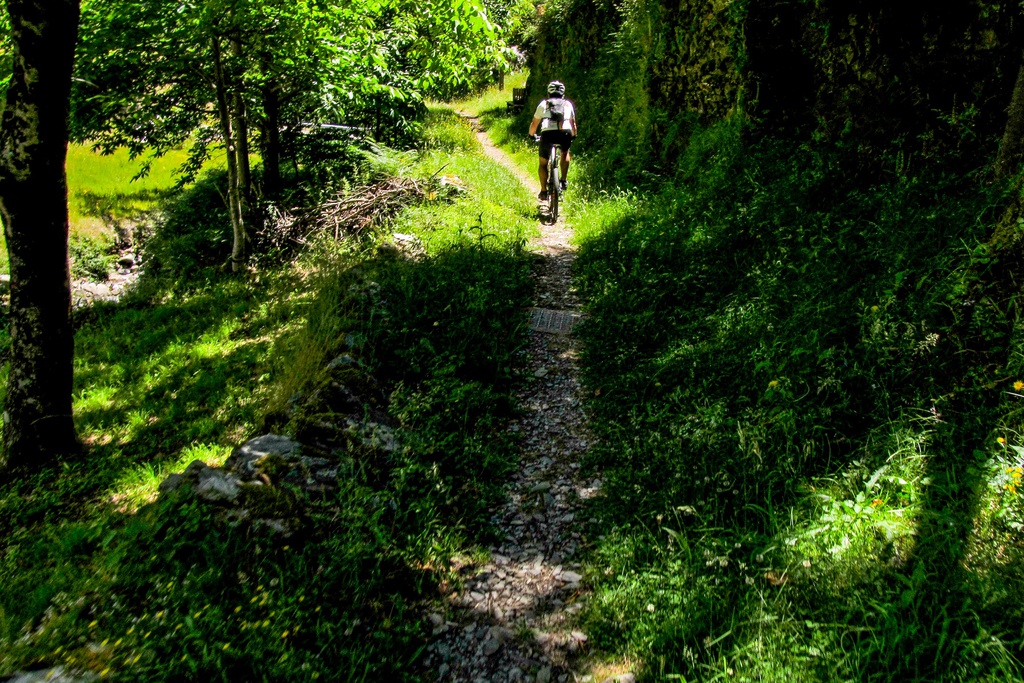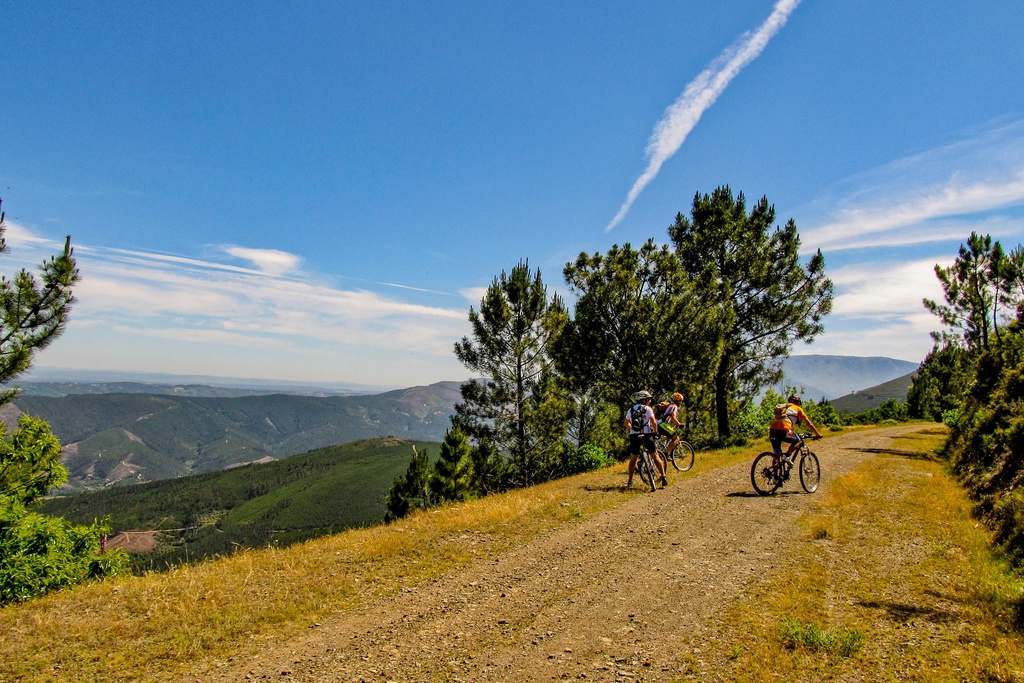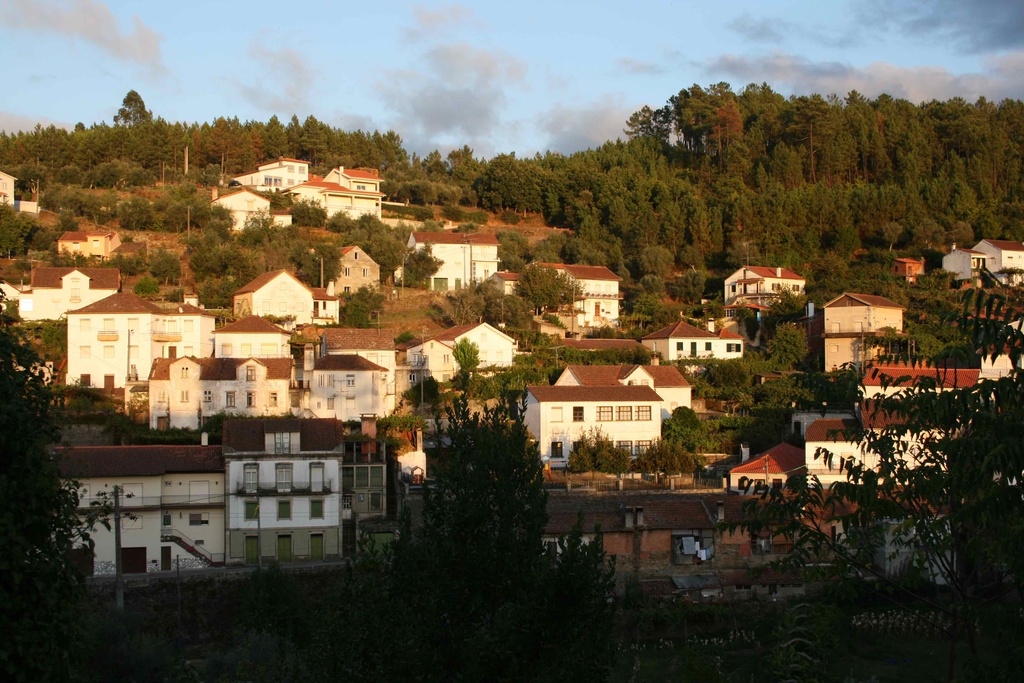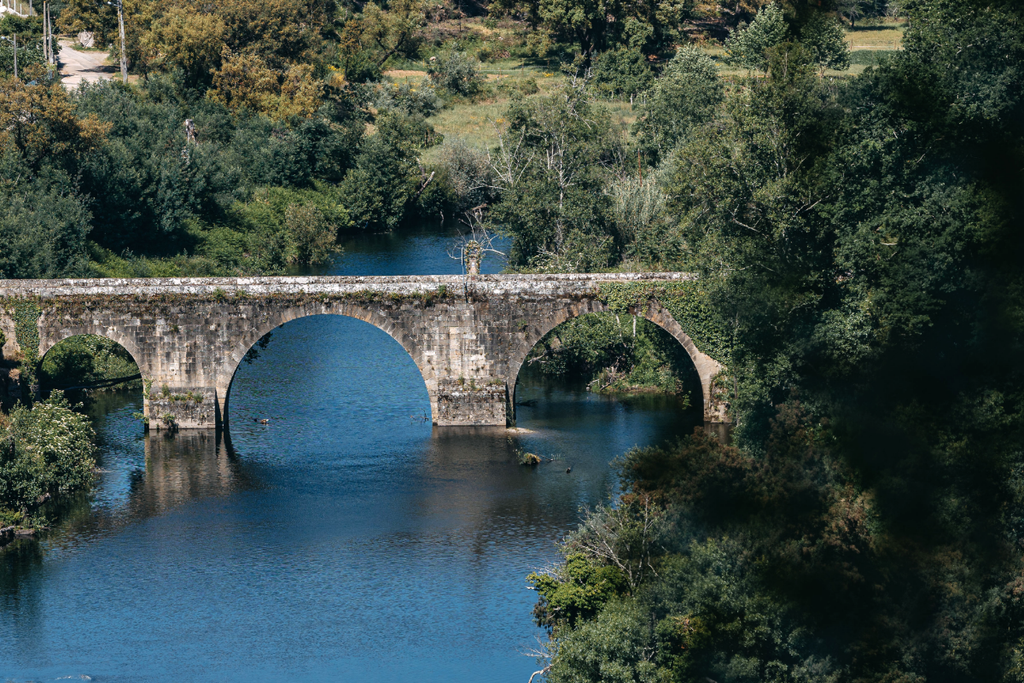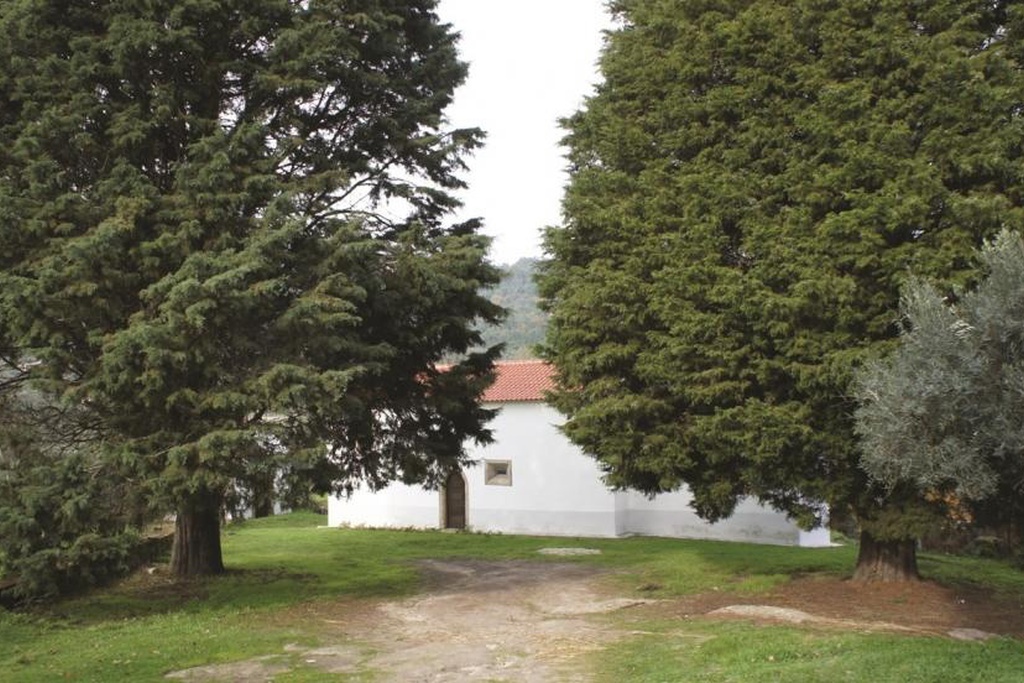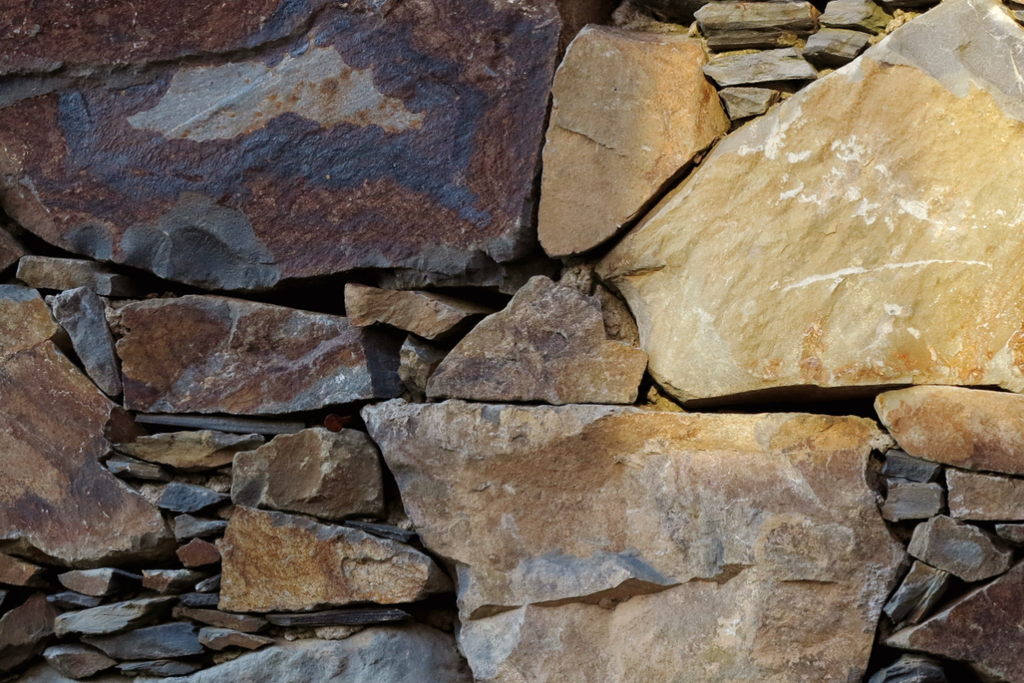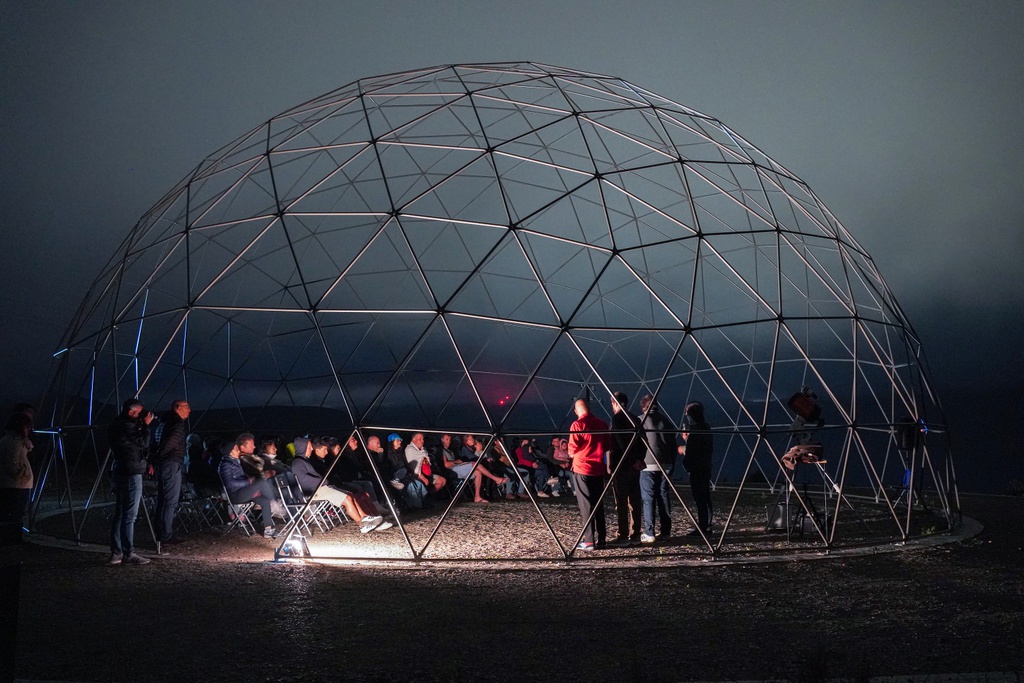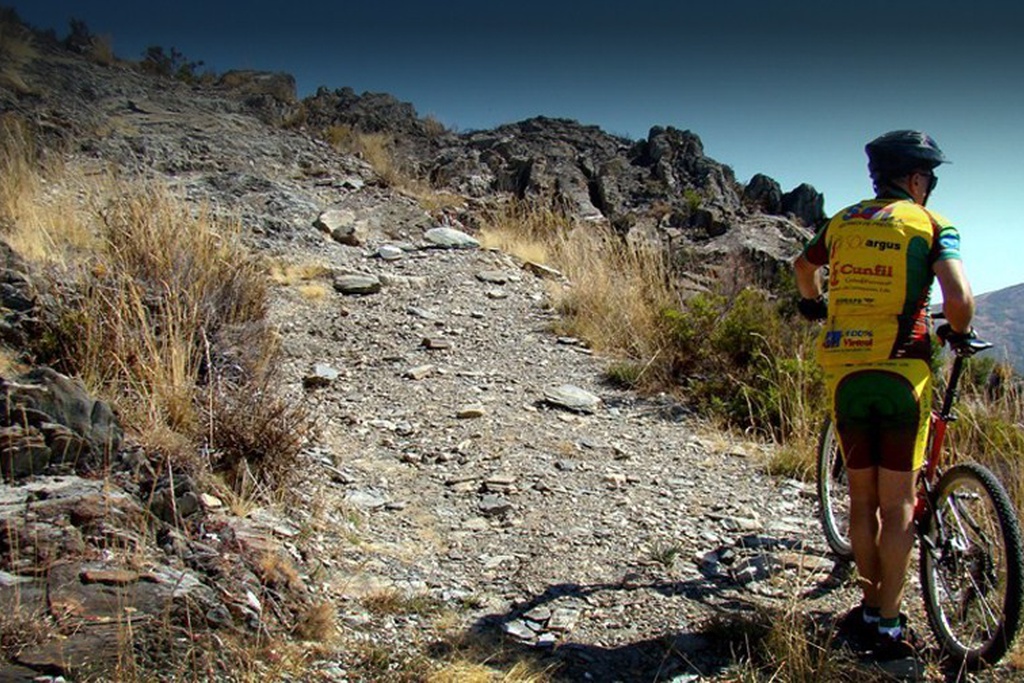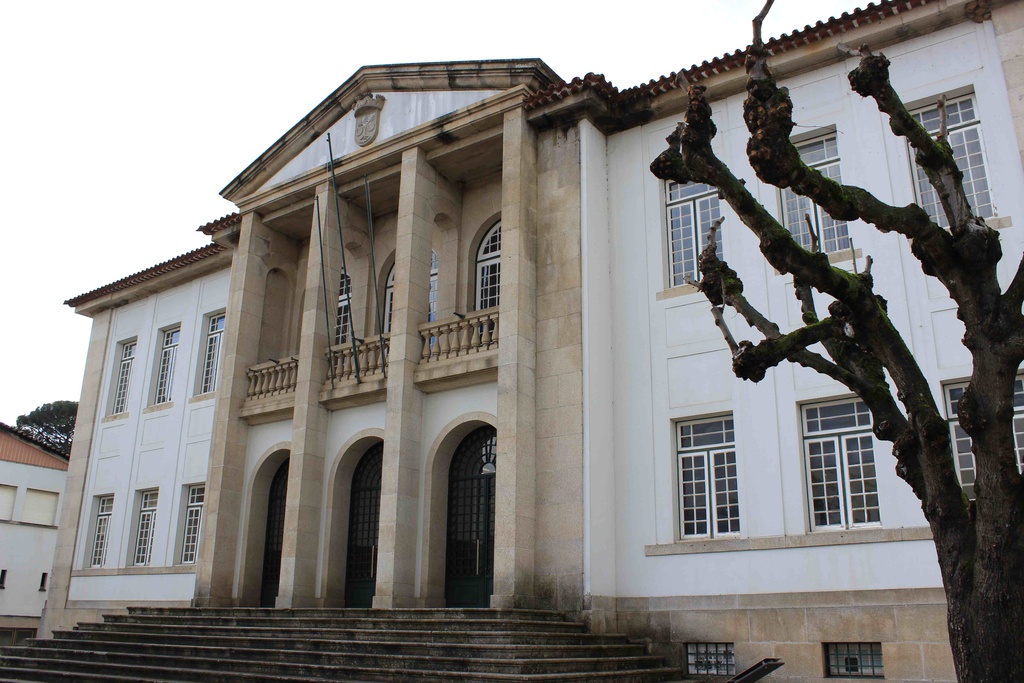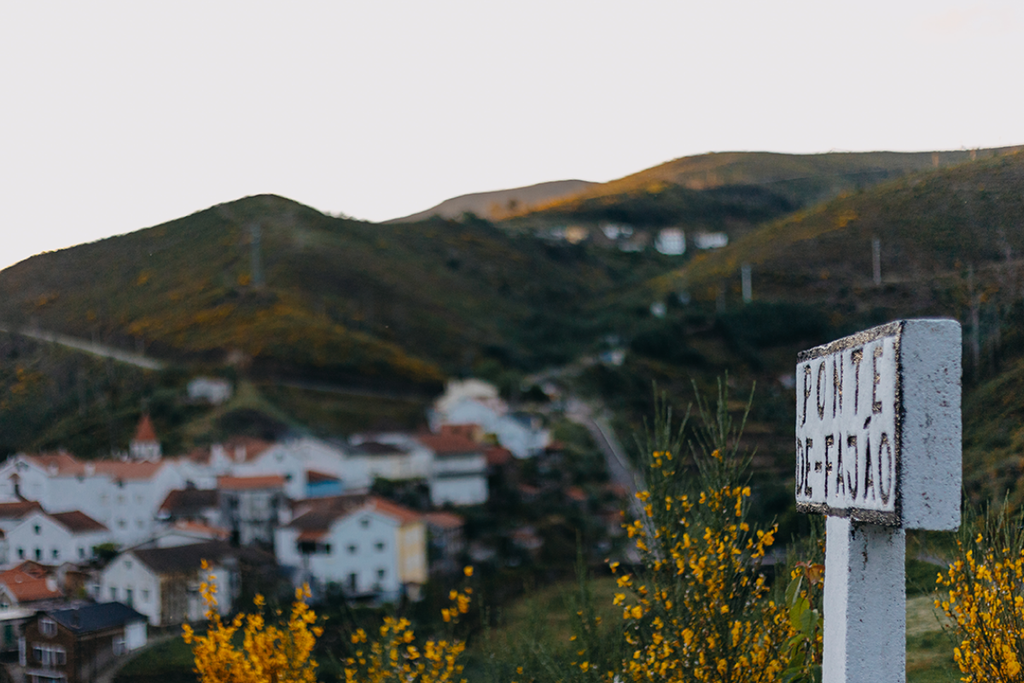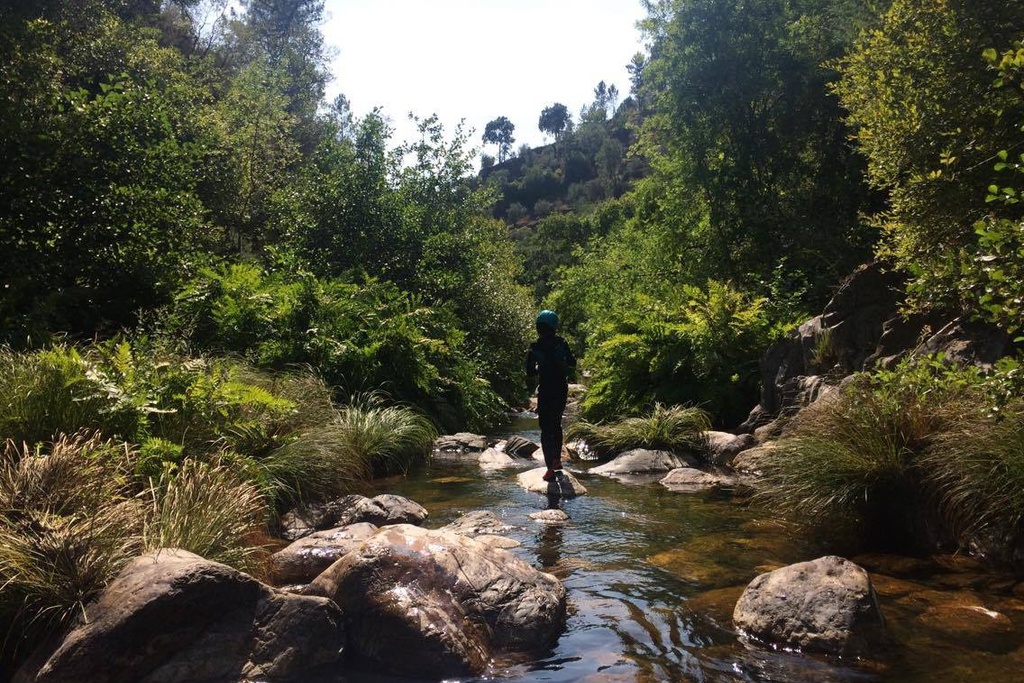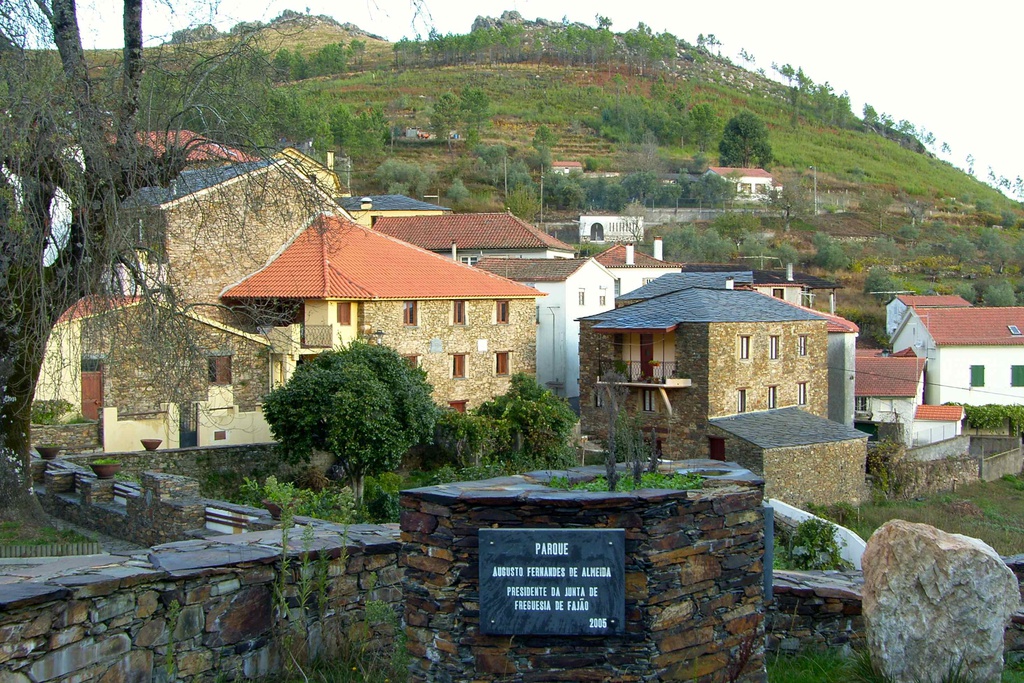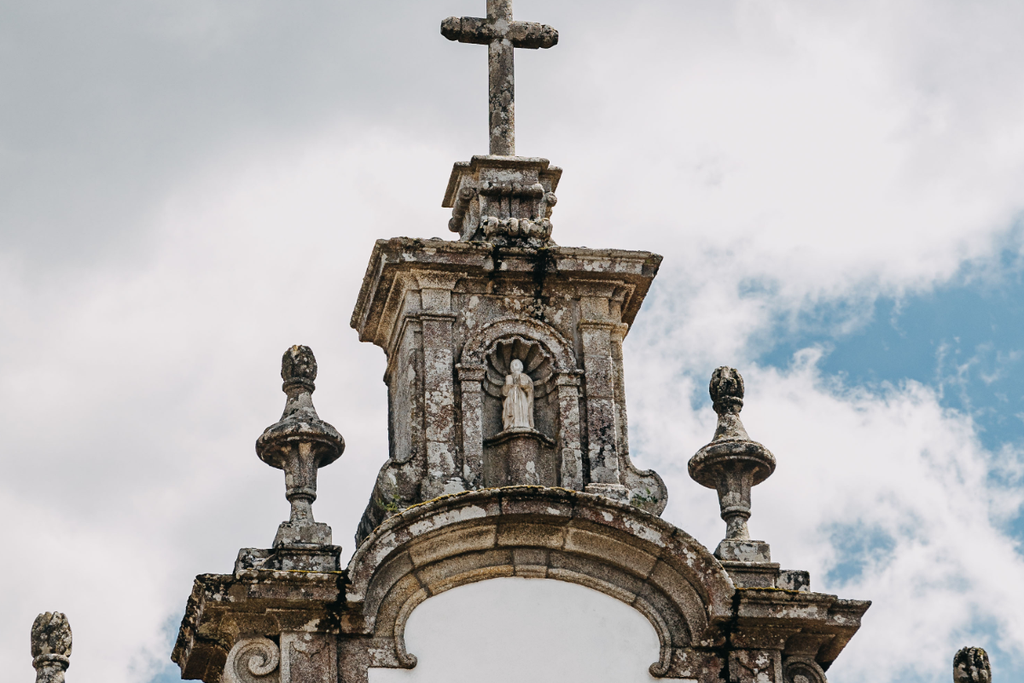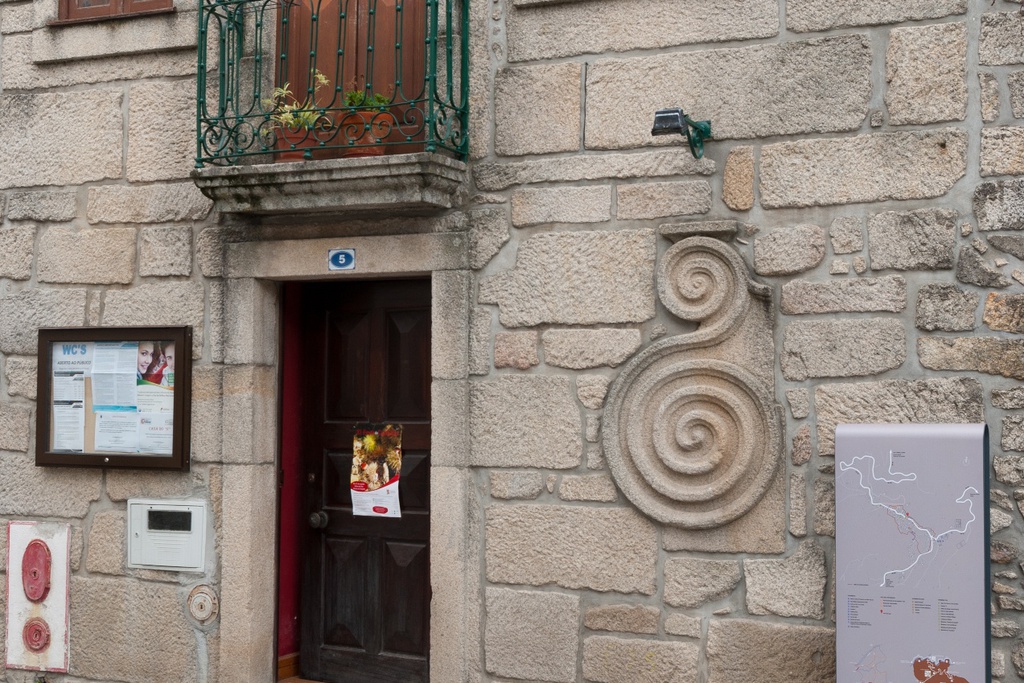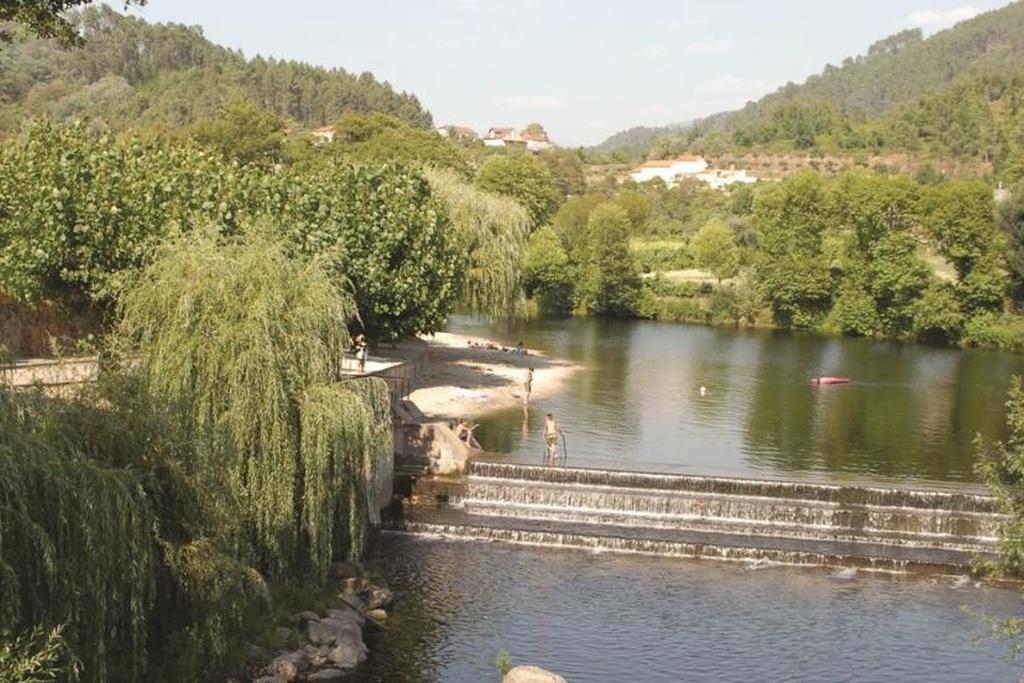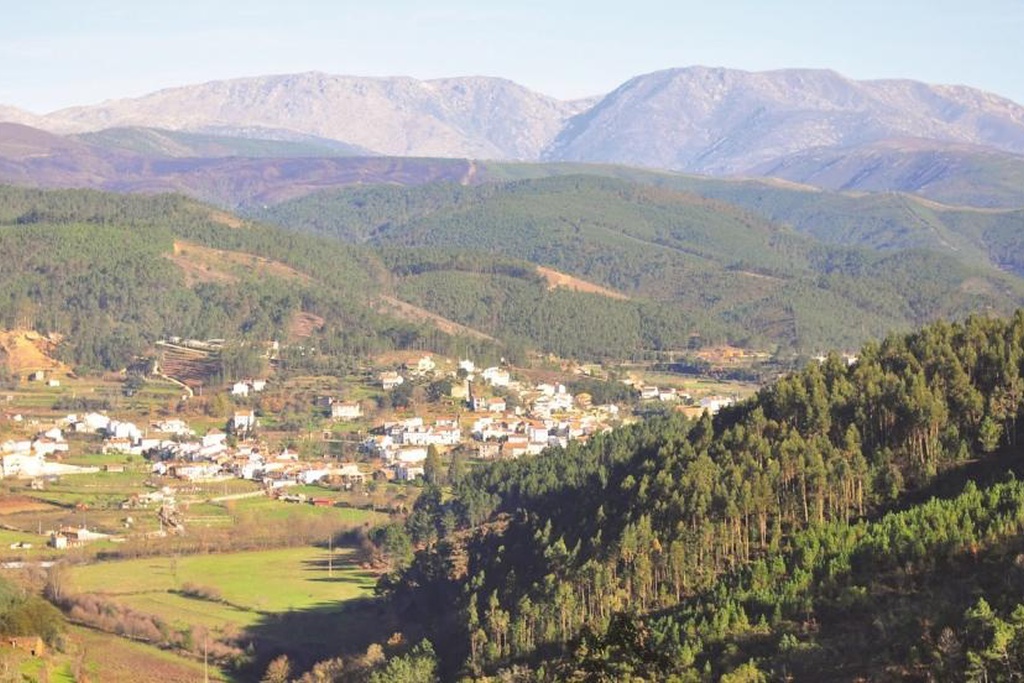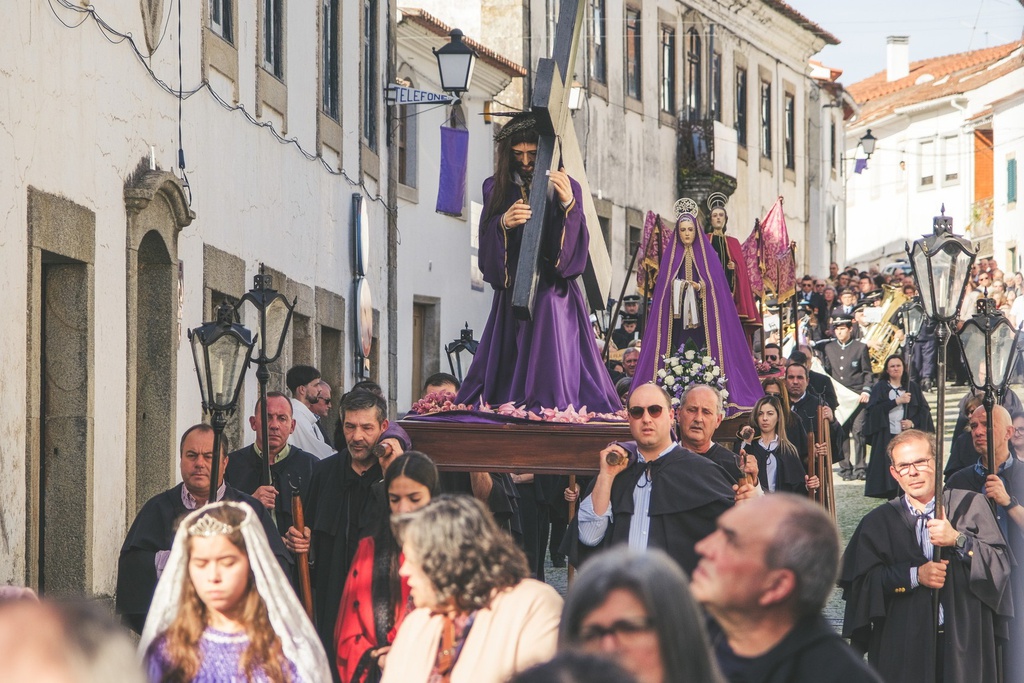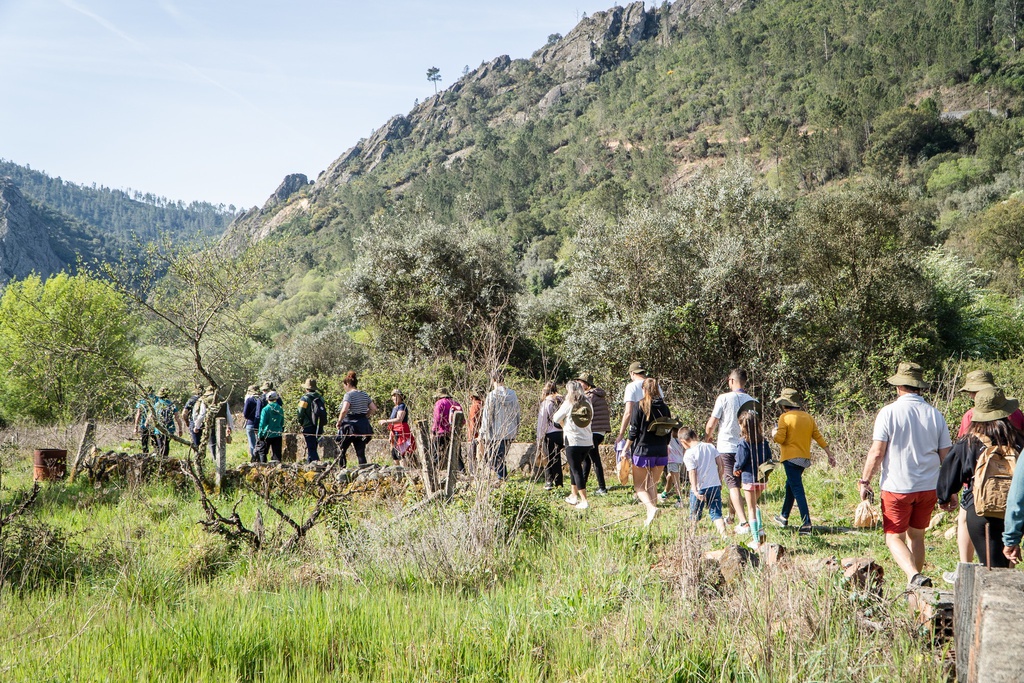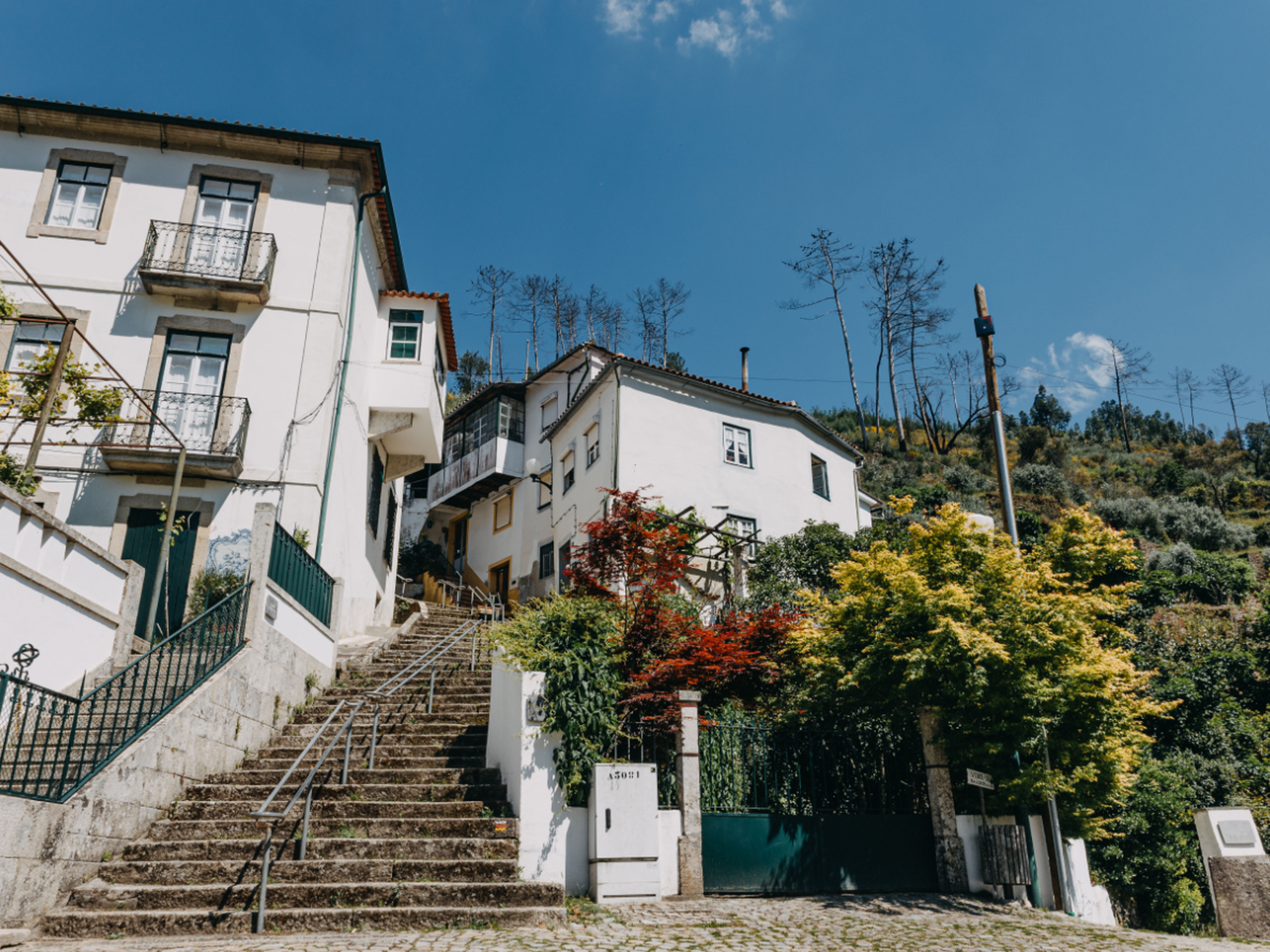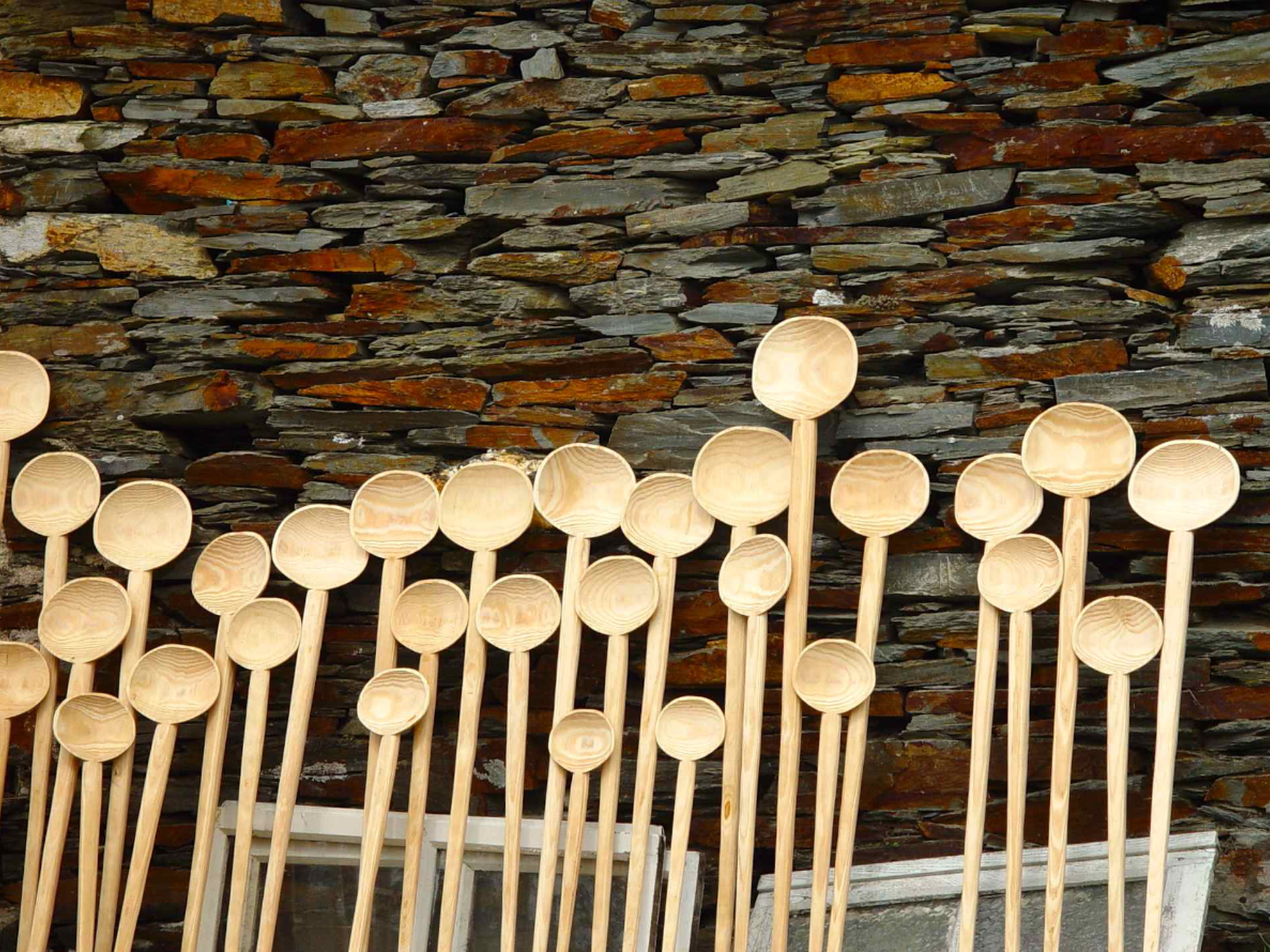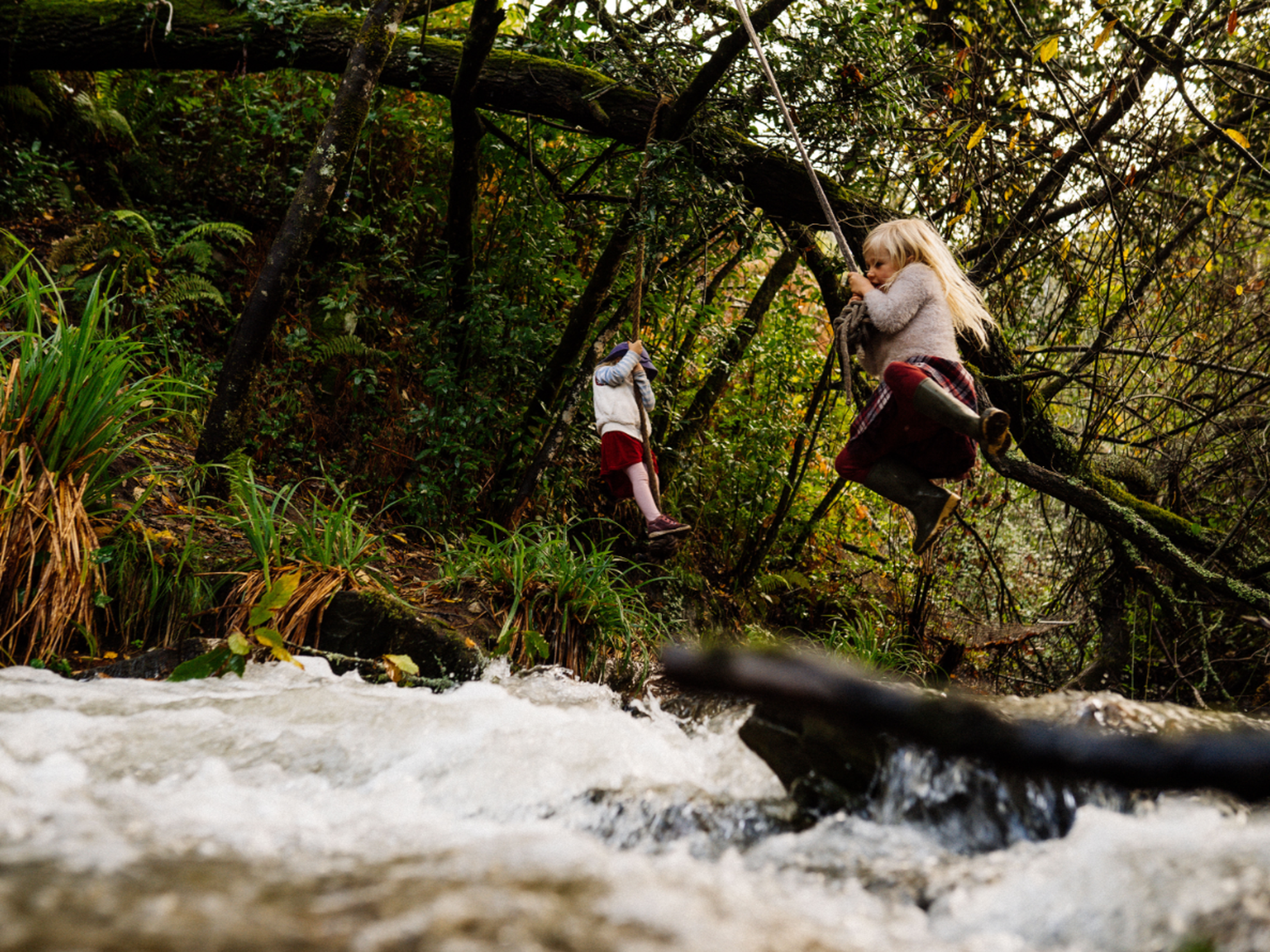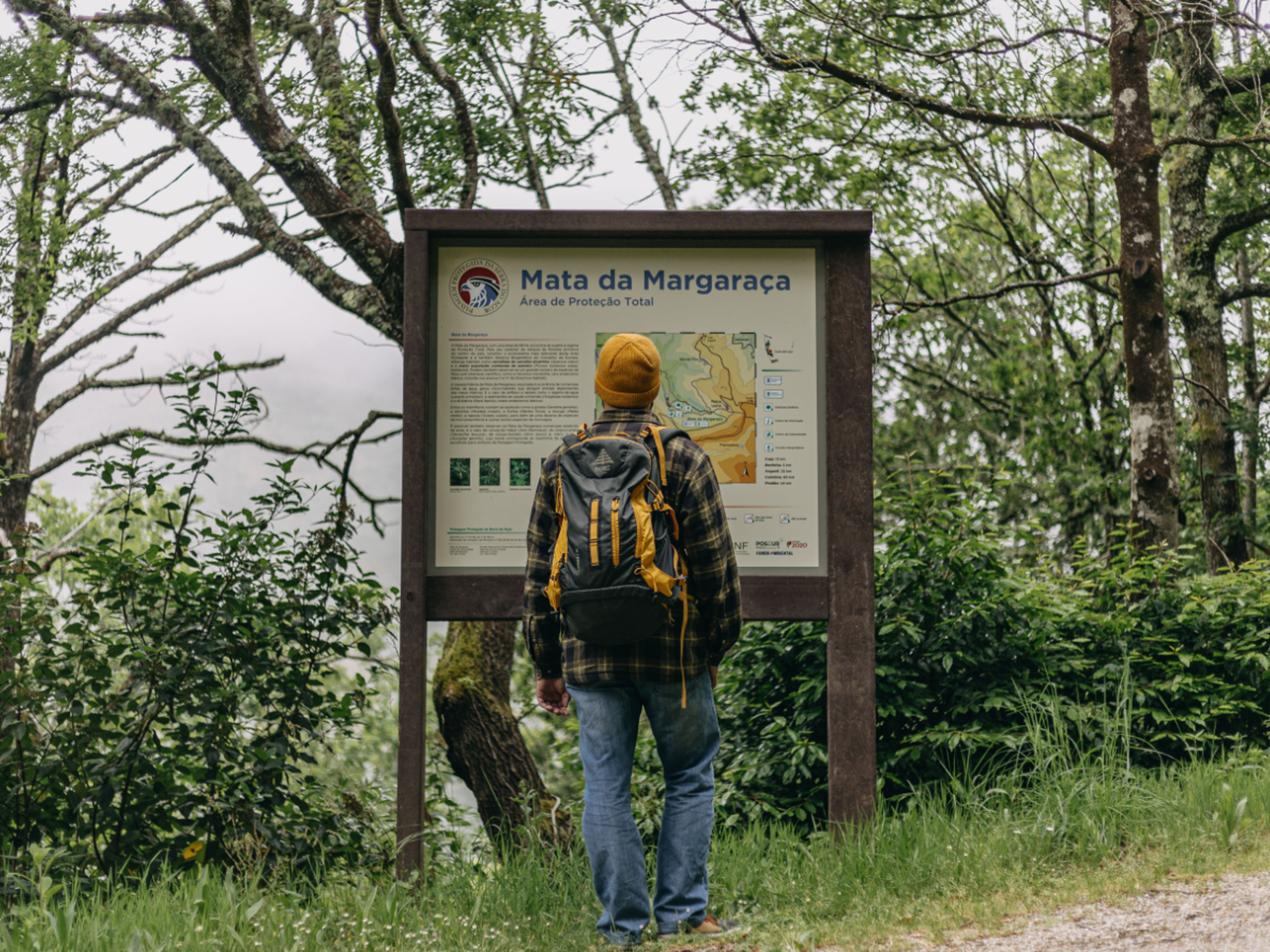A document dated October 1196, currently in the Torre do Tombo National Archives, states that half of villa Bienfecta belonged – it is not known since when or how - to Suário Pedro, the father or father-in-law of Pelágio Aries and his wife Lupa Suaris who sold it for 72 morabitinos to Canon Pedro Salvador, chaplain of Coimbra Cathedral. Four years later, Canon Pedro Salvador donated the land to the Chapter of Coimbra Cathedral. The record of this donation is also in the Torre do Tombo.
When in the green years of my youth I passed my three months’ holiday in the place of my birth, how many times, gazing at the chestnut plantation in valley, [...] the houses arranged in an amphitheatre on the slopes of Outeiro, did I ask:
- How old is Benfeita? When was it founded?
The houses made of local stone, rarely decayed and in part roofed with stone slabs, nothing gave any indication”.
Mário Mathias (b. 1899; d. 1982)
In the General Archive of the University of Coimbra, among the Latin Documents, Volume II, there is a copy of the first known charter of the villae rusticae de Bienfecta. The parchment, of uncertain date (12th-13th century), lays down the rights and duties of the inhabitants and appears to prove that the other half of Benfeita belonged to Xusana Fernandis.
This part of Benfeita may be the same as that which is subsequently referred to in passing in the Book of Kalends, in which the Bishop of Coimbra, Dom Egas Fafe (bishop 1248-1267), orders that the estates of Benfeita, Sardal and Mata da Margaraça shall be required to celebrate of birthdays, firstly for his father, and secondly for his soul and his parents. It is not known how the bishop acquired this land. It was he who in 1260 gave a charter to the village of Coja, which was part of Benfeita, although there is no mention of the latter.
A charter dated 17 May 1300 set out the rules governing the inhabitants of Benfeita. “And we, the aforementioned residents of the said place, for our part and on behalf of our heirs and successors, approve and grant and promise to obey and keep all things, and each one of them, as is stated above.” (MATHIAS, 1961: 22). This charter names only individuals belonging to the Chapter of the Coimbra Cathedral, which had always owned its own property, and not the bishop.
“And we, the aforementioned residents of the said place, for our part and on behalf of our heirs and successors, approve and grant and promise to obey and keep all things, and each one of them, as is stated above.” (MATHIAS, 1961: 22).
On 1 February 1345 a grant of privileges was made in the Cloister of Coimbra Cathedral in which there is a reference to the considerable woodland in the Mata de Magaraz. The same parchment mentions the foundation of two new villages: Monte Frio and Relva Velha. The grant is so detailed that even today we can precisely identify all the places mentioned. Incidentally, this area seems to correspond to the present parish of Benfeita.
In the “Register of the population of the Kingdom (1527)” the entry for the town of Coja included the place then called bemfeyta which had 18 residents. In 1854, Benfeita was dominated by the bell tower of the Mother Church, with the cemetery on its north side. The houses stretched only along the right bank of the Ribeira da Mata. A few years later, the creation of a new road, now called Rua António Nunes Leitão, replaced the land occupied by cornfields, known as the “lands of Mó”, meaning grindstone. In a few years this road was being filled with a variety of dwellings. In 1894 the cemetery crossed to the opposite side of the Ribeira da Mata, moving to the “Corga” area.
In 1931 work began to lay the main road, which would spell the end of the old footpath that meandered through the hills and valleys, crossing several streams and hugging the edges of many precipices. The distance from Benfeita to Coja that had previously taken over two and a half hours now took fifteen minutes. After 1955, the village expanded along the left bank of the Ribeira do Carcavão. At the turn of the 20th century the majority of roofs were made of slate. By the middle of the 20th century, however, this characteristic feature of the villages of the Beira Serra had almost disappeared, along with the Marseilles tiles or thatch preferred for the barns and animal pens. This is confirmed by Alberto Martins de Carvalho in the early 1940s:
… it is a fairly extensive village lying in the bottom of a valley.” in “Guia de Portugal - Beira Litoral, Beira Baixa, Beira Alta” (1944)
Electricity arrived around 1953.
Benfeita folktale
In the chapel of Santa Rita there was formerly a pulpit. One day a friar with a very long white beard came to preach a sermon. Now, while he was speaking, there was an old man in the congregation who was weeping all the while. When he had finished, the friar, fearful that the man was suffering on account of his sins, went up to him and asked him:
- Brother, are you weeping for your sins?
At this, the astonished man replied:
- No, Father, it’s just that when I was looking at you, it reminded me of a young buck that the wolves took from me in the Serra da Picota.
Our Beloved Month of August
This film was shot here, in these settings and with characters from this and other villages. Miguel Gomes, the screenwriter and director, addresses the theme of summer in this village when city people settle temporarily into the natural and cultural environment of this area.
João Brandão in Benfeita
“João Brandão was a right-wing liberal [this is at the time of the liberal struggles of the nineteenth century], who would prove himself to be a talented organiser and leader of counter-guerrilla operations. [...]” For this reason he always had many enemies plotting to kill him. In 1852 another band of the opposing faction headed by an individual known as the “Ferreiro” [Blacksmith] tried to kill him. “But despite all this, some time later the two groups decided to make it up – a decision that must have displeased the “Ferreiro” for not being listened to or believed. And it displeased him so much that he decided to continue the fight alone. [...] So later, the “Ferreiro”, hidden in a bramble thicket, shot at João Brandão but missed. [...] João Brandão then felt that he was truly in danger, since the “Ferreiro” was not about to give up. [...] It so happens that at that time the government was being attacked in Parliament because of the insecurity that reigned throughout the country, especially in the Beira. [...] Given this, João Brandão offered to cooperate with the Minister and, once returned home, began recruiting people [...] “ The operation began with a search for the “Ferreiro” in the Avô area. “However, the outlaw, who had meanwhile been warned, fled into the mountains accompanied by his brother [...]” During an ambush the “Ferreiro” was wounded but managed to escape, but now needed treatment. “João Brandão then sent some men to Porto Castanheiro and then went with others to Benfeita, because these where the areas where the “Ferreiro” would be most likely to find a barber who would treat him. On arrival at Benfeita, João Brandão learned that the “Ferreiro” and his brother were indeed hidden in a local hayloft [...]. João Brandão sent for the force that had gone to Porto Castanheiro, and began the siege of the hayloft. [...] the first men to enter the hideout arrested the “Ferreiro” who did not put up any resistance [...]. At this point, João Brandão entered accompanied by “Anjinho”, [an endearing term for angel] who, the moment he saw the “Ferreiro” fired a shot at his chest that killed him instantly. This unexpected outcome, which no one could prevent, cannot have pleased João Brandão, who wanted to arrest the “Ferreiro” [...]; moreover, it would certainly have brought him problems with the judicial authorities, because the responsibility for the crime would now fall on his shoulders. As Benfeita belonged to Arganil municipality – where João Brandão did not have the same influence as he had in Tábua – he nevertheless tried to remedy this problem by ordering the corpse to be carried out of the municipality. [...] However, João Brandão did achieve not what he hoped: the crime would still be tried in the Arganil court [...]
Amândio Galvão


